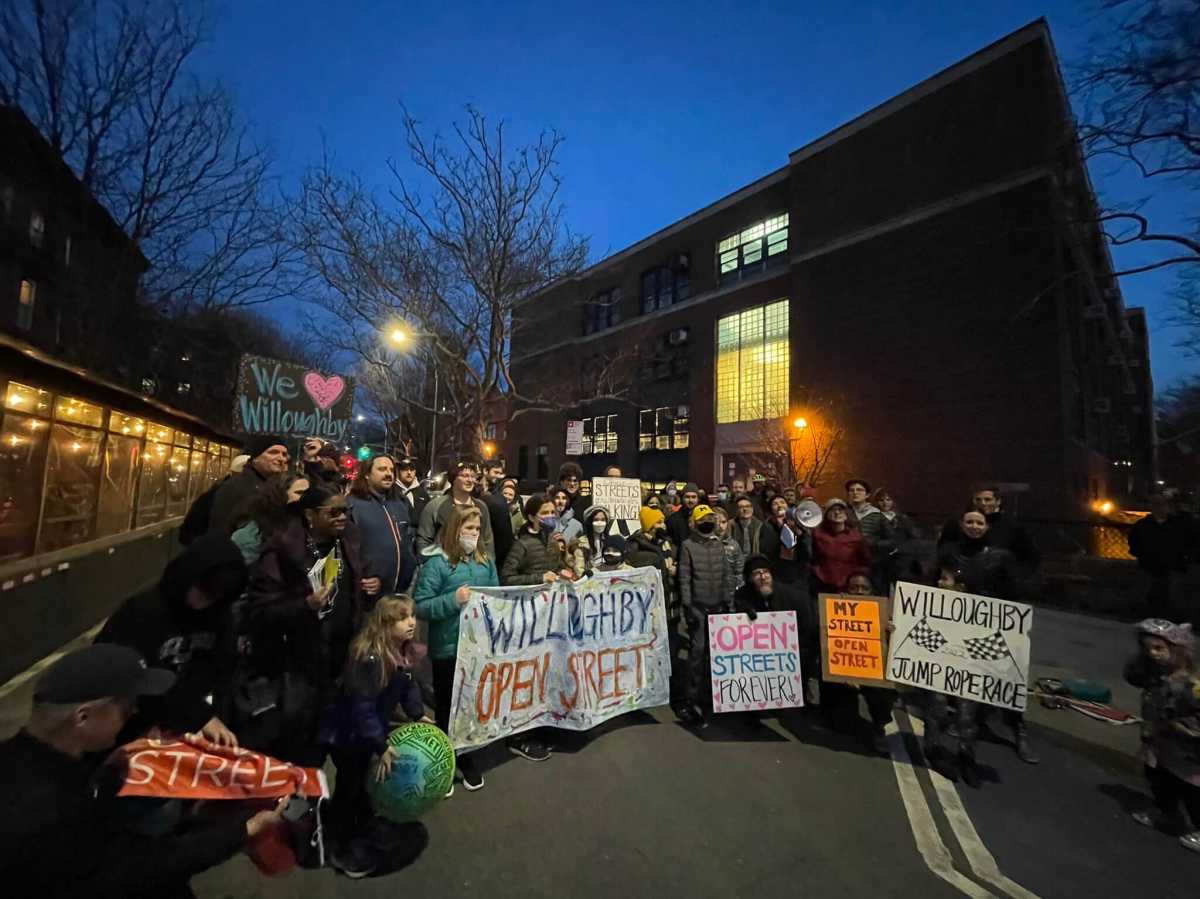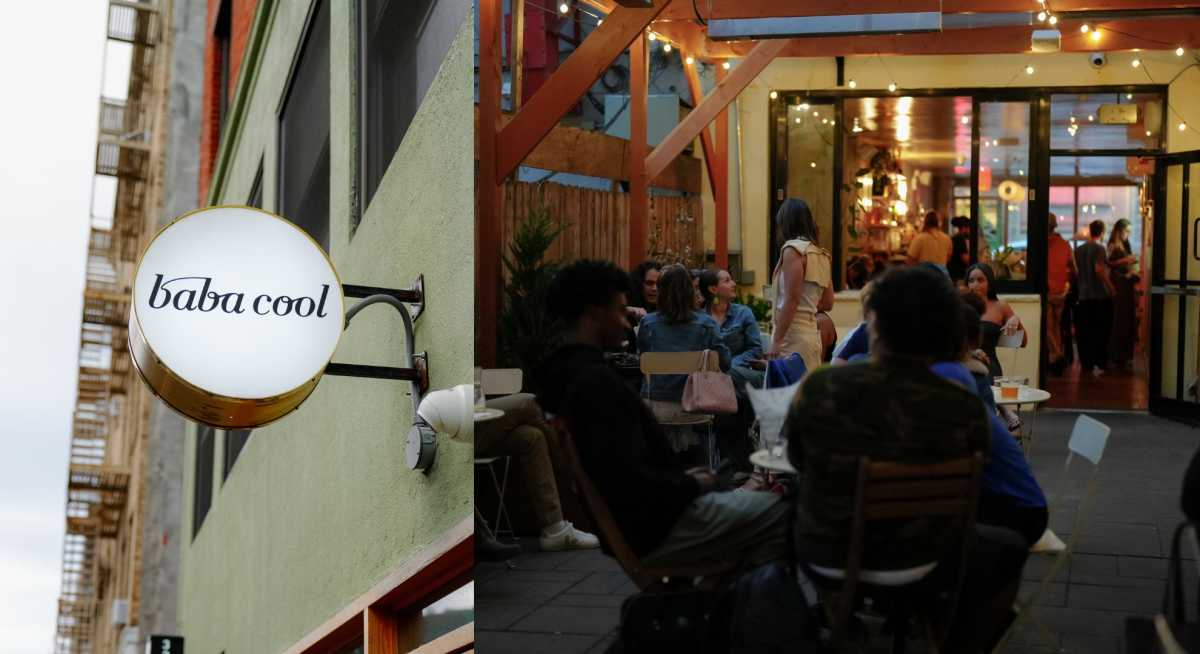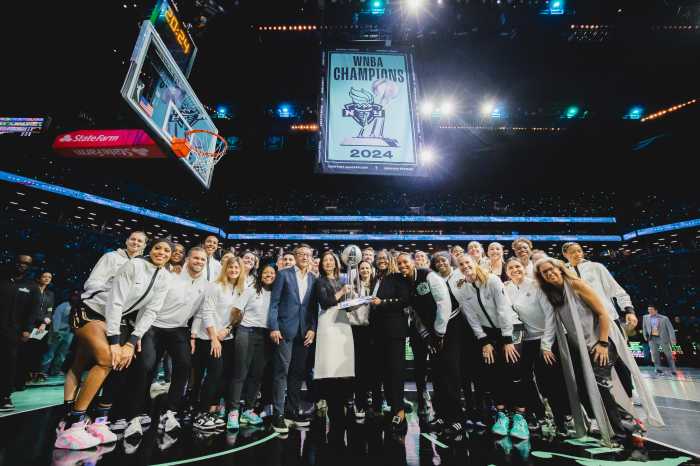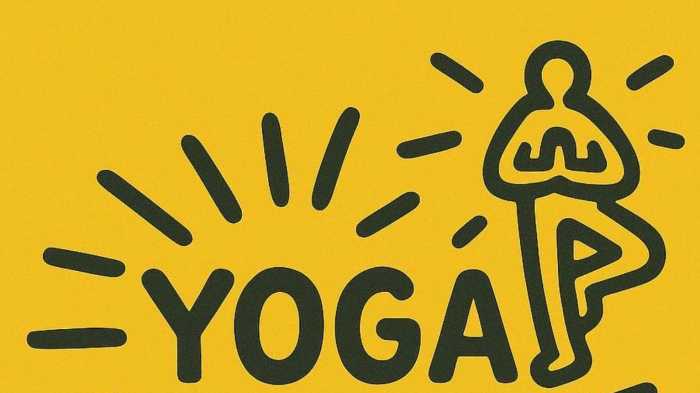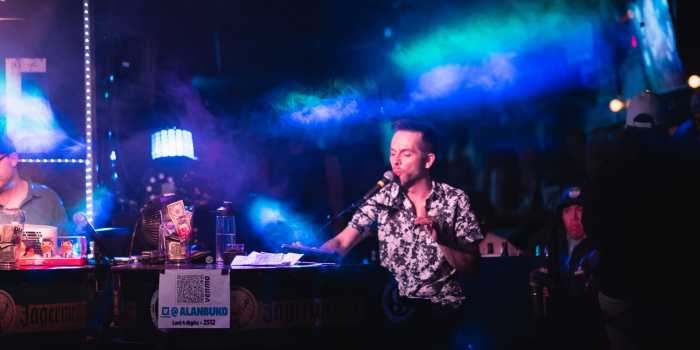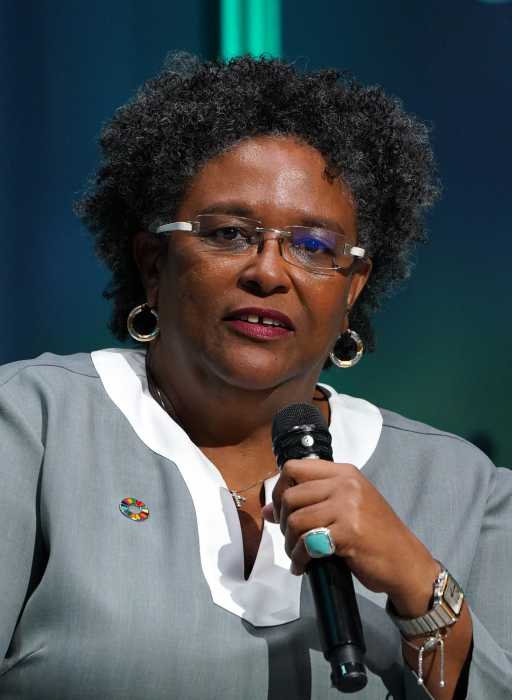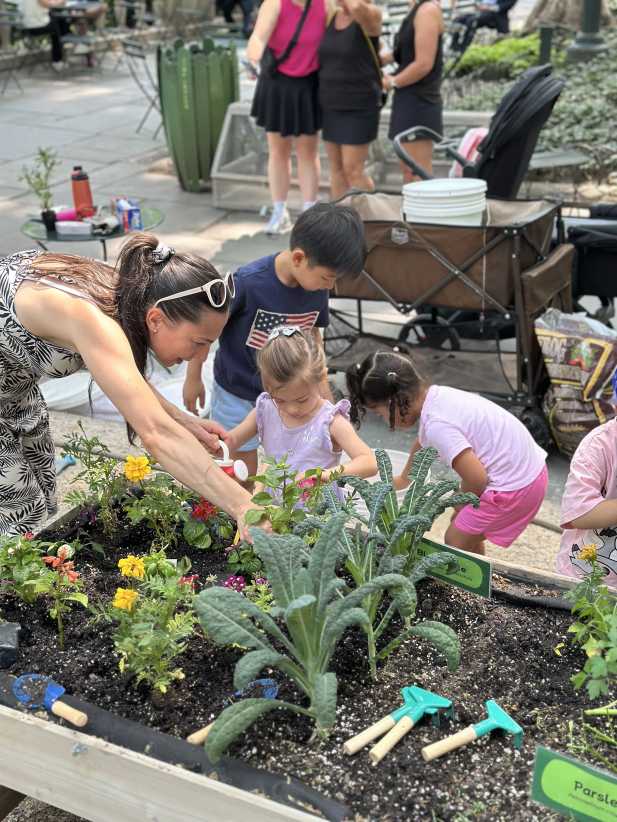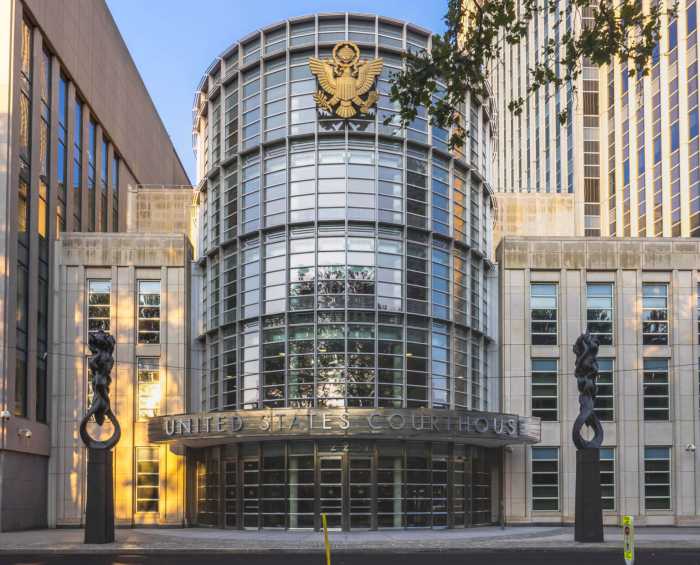Last month’s brief removal from commission of the beloved Willoughby Avenue “Open Street” in Fort Greene has struck a nerve in the brownstone Brooklyn community. Officials convened a meeting Tuesday night, March 8, to allow both supporters and opponents of the eight-block open street to ask questions of elected officials and transportation honchos, but the meeting quickly devolved into confrontation and chaos.
The eight-block open street, which is closed to motor vehicle through-traffic 24-hours-per-day, was abruptly removed from commission last month with no public input and little advance notice. After outcry from local residents, safe streets advocates, and new local Councilmember Crystal Hudson, the barriers were restored within a few hours, and the open street was back in business. The Department of Transportation has said that the removal of the barricades was the result of a “miscommunication.”
The meeting, hosted by Hudson and DOT Commissioner Ydanis Rodríguez, was intended to be an open discussion on the benefits and downsides of the open street, and potentially how to improve it, but it quickly devolved into chaos as opponents, concerned about losing parking spots, repeatedly shouted down Hudson while she attempted to read submitted questions, and DOT officials when they attempted to answer.
“This is about more than just this community meeting, this is about more than just open streets, this is about safe streets, this is about hearing everybody out and making sure that all perspectives can be heard,” Hudson said upon closing the meeting, following sustained disruption from the anti-open-streets crowd. “And I hope that coming out of this meeting, we can all treat and look at our neighbors with a little more love and respect.”
Surveys conducted by Hudson’s office and by DOT found overwhelming community support for the open street. Hudson’s office found 85 percent of respondents to a Google Survey expressed either full or partial support, while DOT found 88 percent of respondents wanted permanent changes to streets to prioritize the safety of bicyclists and pedestrians.
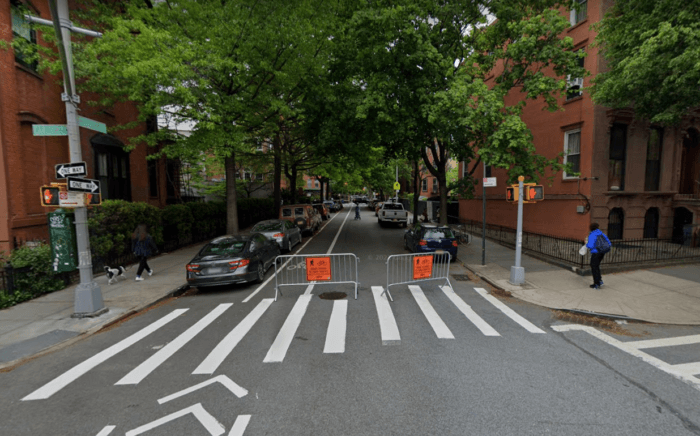
But some opponents at the meeting repeatedly claimed that they had never been provided the opportunity to take a survey on their thoughts, and accused those who responded to the survey of not living in the community. Hudson acknowledged that a Google Survey was an imperfect way to measure community buy-in, though DOT said that 90 percent of respondents to its survey live in close proximity to the open street.
Most of the questions asked and answered at the meeting seemed to come from the opponents, who raised concerns about about parking on the open street, the ability of emergency vehicles to bypass the route, and the level of community input required, or desired, for either implementation or removal of the open street.
There are currently 66 sections of open streets in Brooklyn, according to DOT, and the city plans to add more, a list of which is set to be unveiled next month. The program started during the spring 2020 pandemic lockdown as an emergency measure to provide residents some socially-distanced space outdoors; the program was made permanent last year.
A poll by Siena College, commissioned by the safe streets advocacy group Transportation Alternatives, found Open Streets to have the support of 63 percent of registered New York City voters surveyed. Mayor Eric Adams campaigned on expanding open streets, and the brief closure of Willoughby led some to believe he had broken a campaign promise just weeks into his mayoralty. The mayor denied any involvement in the closure, and in fact claimed that the decision had been made without his knowledge; he said that he ordered the barriers restored as soon as he was informed and knew that Hudson was not in support of the removal, Gothamist reported.
“When the information came to my attention — which I was not aware of — when it came to my attention, I called the commissioner,” Adams said last month, according to Gothamist. “I asked, ‘Is this something my Councilwoman wants?’ And once I was told no, I was very clear: ‘Put that street back.'”
The meeting was expected to be contentious, and questions were required to either be submitted in advance or written down on notecards. Asked why the program has continued despite the lifting of COVID restrictions, Rodríguez — who with Adams has pledged to bolster pedestrian and cyclist safety by redesigning 1,000 intersections and fortifying nominally-protected bike lanes — noted the high number of people still killed in vehicle collisions, with 2021 seeing the highest number of deaths on city streets in eight years at 274. Tens of thousands more were injured.
“What we have seen in the last two years is an increase in crashes,” Rodríguez said, to shouts from some in the crowd of “not on Willoughby.”
“We have seen a lot of New Yorkers losing their life,” he continued, before eventually being drowned out. “And I think that is important for no one to feel like anyone is winning a debate or a conversation. But we want you to know that we have a responsibility to think about, first of all, protecting our senior citizens is our top priority.”
According to NYC Crash Mapper, 72 people have been injured in a vehicle collision on the stretch of Willoughby now used as open street in the past decade. That includes 35 cyclists, 33 motorists, and 4 pedestrians. No deaths have been recorded on the stretch over the past decade. Kyle Gorman, senior manager of the Open Streets program at DOT, said at the meeting that data shows a reduction in crashes on open streets since the program was instituted.
The open street on Willoughby Avenue has been arguably one of the most popular stretches across the city, and it has been studiously maintained by local volunteers. Late last year, the city began installing upgrades to the open street under DOT’s “Light Touch” initiative, adding curb extensions to narrow the roadway, planters, new signage, and other traffic calming measures. The upgrades were completed soon before the open street’s brief closure.
Despite a number of opponents’ contention that they could not travel down the street to park, DOT officials noted that the street is closed only to through-traffic, and residents are still able to travel along it in a vehicle, at a cool 5 miles per hour, to find a parking spot. The department did acknowledge that the program meant fewer parking spaces, but said it considered that a worthy tradeoff for the benefits brought to the community.
“Yes, there is gonna be some parking lost in these new treatments happening in the street, there’s no question and we sympathize with that because, you know, we know it’s tough to park,” said DOT’s Brooklyn Borough Commissioner, Keith Bray. “But we think overall, on balance, these programs, we think the good they bring is worth it to continue to pursue them.”
The meeting came to an unceremonious end when opponents accused supporters of having significant outside funding and organizing prowess, a contention that the supporters denied but which triggered yet another shouting match.
Correction (March 10, 8:39 am): This article originally misstated Kyle Gorman’s name as Ethan Gorman. We regret the error.


